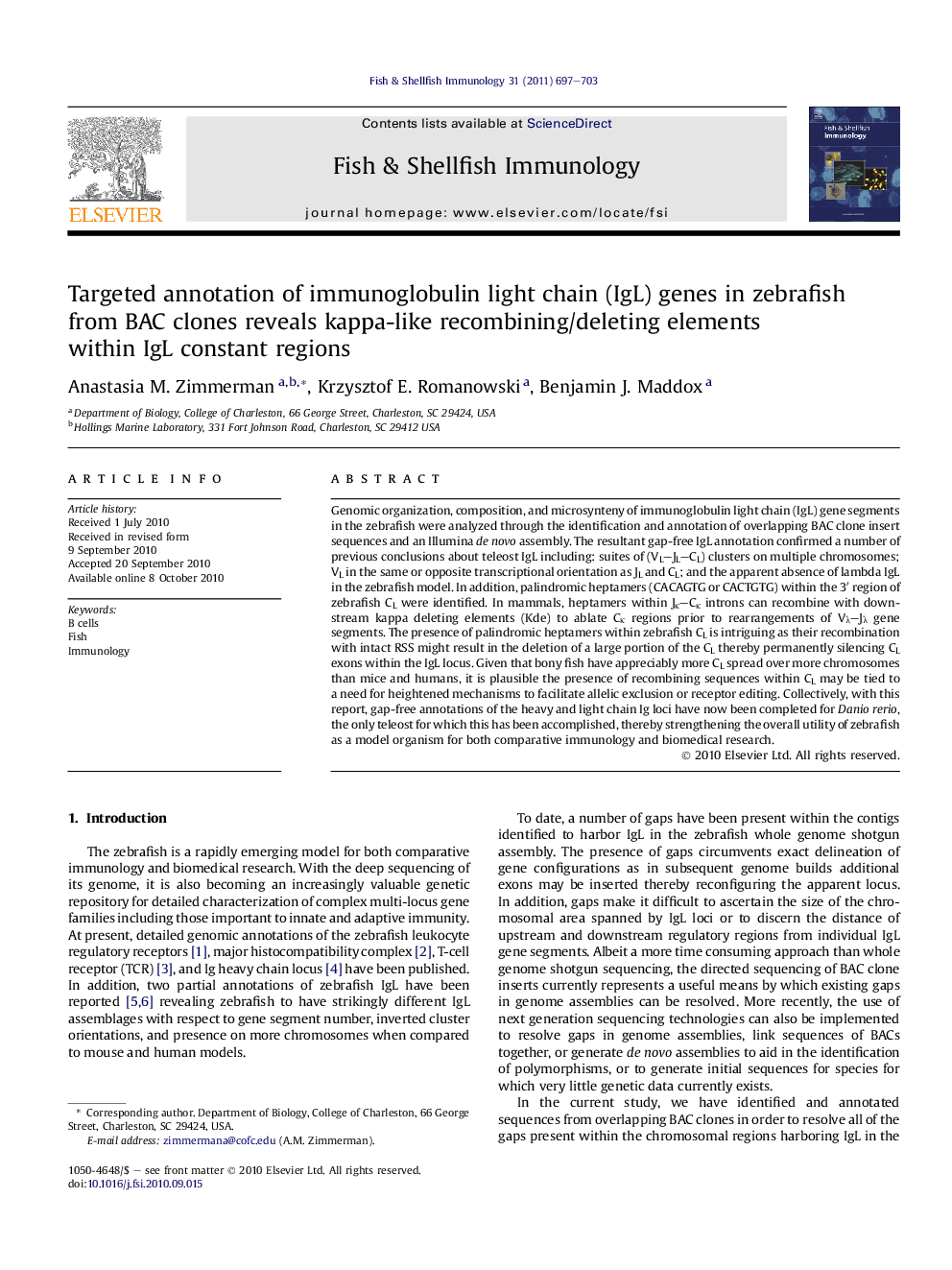| Article ID | Journal | Published Year | Pages | File Type |
|---|---|---|---|---|
| 2432028 | Fish & Shellfish Immunology | 2011 | 7 Pages |
Genomic organization, composition, and microsynteny of immunoglobulin light chain (IgL) gene segments in the zebrafish were analyzed through the identification and annotation of overlapping BAC clone insert sequences and an Illumina de novo assembly. The resultant gap-free IgL annotation confirmed a number of previous conclusions about teleost IgL including: suites of (VL–JL–CL) clusters on multiple chromosomes; VL in the same or opposite transcriptional orientation as JL and CL; and the apparent absence of lambda IgL in the zebrafish model. In addition, palindromic heptamers (CACAGTG or CACTGTG) within the 3′ region of zebrafish CL were identified. In mammals, heptamers within Jκ–Cκ introns can recombine with downstream kappa deleting elements (Kde) to ablate Cκ regions prior to rearrangements of Vλ–Jλ gene segments. The presence of palindromic heptamers within zebrafish CL is intriguing as their recombination with intact RSS might result in the deletion of a large portion of the CL thereby permanently silencing CL exons within the IgL locus. Given that bony fish have appreciably more CL spread over more chromosomes than mice and humans, it is plausible the presence of recombining sequences within CL may be tied to a need for heightened mechanisms to facilitate allelic exclusion or receptor editing. Collectively, with this report, gap-free annotations of the heavy and light chain Ig loci have now been completed for Danio rerio, the only teleost for which this has been accomplished, thereby strengthening the overall utility of zebrafish as a model organism for both comparative immunology and biomedical research.
